Exploring Lake Titicaca in Copacabana, Bolivia
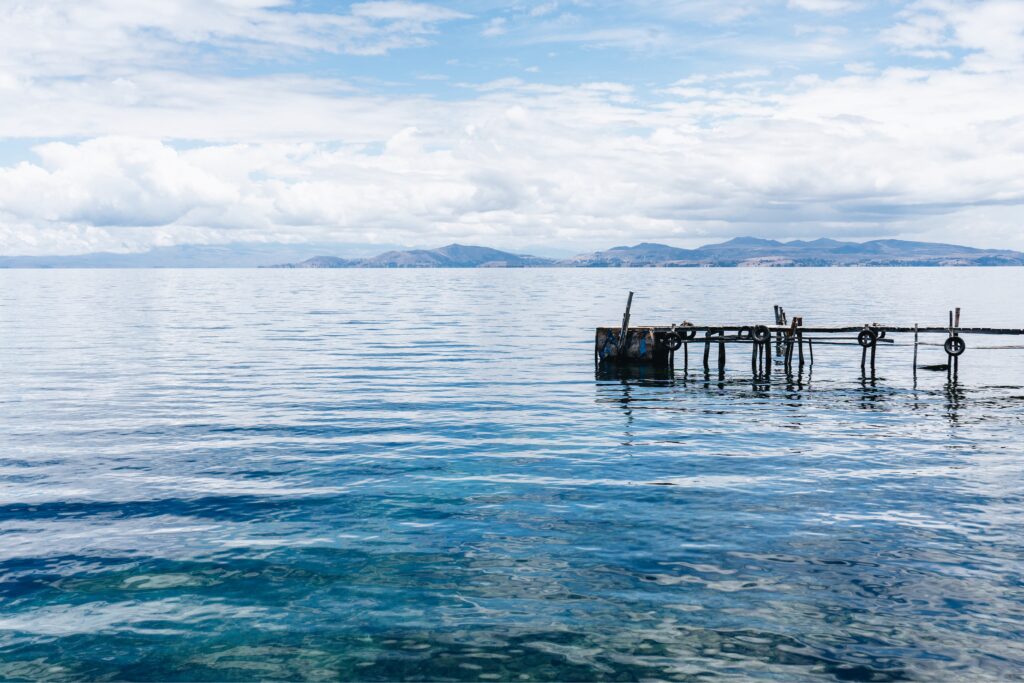
The quaint town of Copacabana, Bolivia is a hidden gem nestled along the shores of Lake Titicaca. Explore ancient Incan heritage, indulge in traditional Bolivian cuisine, take a peaceful lakeside walk, or hike up to one of the breathtaking viewpoints in town. Whether you’re seeking relaxation, adventure, or history, this vibrant town is sure to charm any traveler’s heart.
~ My Experience in Copacabana, Bolivia ~
I spent 4 days wandering around Copacabana, Bolivia. The lively streets of the local markets, the freshly squeezed orange juice every few blocks, and the fresh-caught trout were some of my favorite finds in this friendly town.
I relished my local tour of Isla de la Luna and Isla del Sol where I was the only non-Bolivian on the excursion. It made for quite a fun day as the locals laughed at my broken Spanish and worried about my fair-colored skin getting burned by the intense sun as I sat atop the upper level of the overpacked boat with a smoking engine while sailing the waters of Lake Titicaca.
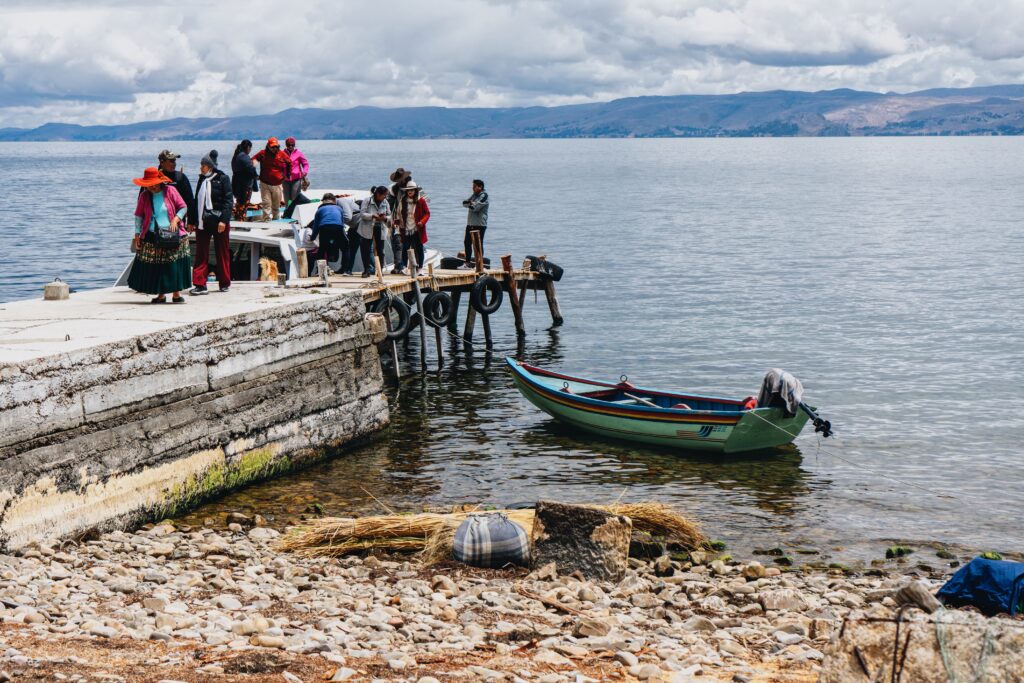
Quick Info about Copacabana, Bolivia
| Location | The eastern shore of Lake Titicaca, Bolivian side. |
| Highlights | Lake Titicaca, Cerro el Calvario, Isla del Sol, Isla de la Luna |
| Elevation of town | 12,600 ft | 3,840 m |
| Distance from La Paz | ~ 4 hour drive without stops |
| Transportation | Local and tourist buses from La Paz |
| Best time to visit Copacabana | Dry season from May to October is said to offer the best weather but Copacabana is pretty nice year-round and doesn’t get much rain in the rainy season. |
| How many days should I spend in Copacabana? | 3 – 4 days allow enough time to explore Copacabana and the nearby islands without feeling rushed. |
| Accommodation | Homestays, hotels, and hostels. Hostel beds cost as little as $5 a night and private rooms around $15. Hotel rooms range from $25 a night up to $200 a night for luxury accommodations. |

Bus From La Paz to Copacabana, Bolivia
Buses run from La Paz to Copacabana daily with departures throughout the day. There are two main options for a bus from La Paz to Copacabana: the local bus and the tourist bus. All buses arrive at Plaza 2 de Febrero in Copacabana.
Local Bus
The local bus is the cheapest way to get from La Paz to Copacabana, Bolivia. The bus departs whenever it’s full, usually every 30 – 60 minutes from 6 am to 5 pm. Pick up the local bus to Copacabana at the La Paz general cemetery. A one-way ticket costs around 20 Bs (~$3 USD).
Tourist Bus
The tourist bus from La Paz to Copacabana, Bolivia is more expensive than the local bus but the schedule is more reliable. The ride is usually shorter because fewer stops are made. The tourist bus departs from La Paz twice a day at 8 am and 1:30 pm from the main bus terminal. A one-way ticket is around 50 BS (~$7-8 US). Reserve your tickets ahead of time online at Tickets Bolivia.
Bus From Copacabana, Bolivia to La Paz
All buses leave Copacabana from Plaza 2 de Febrero. Local buses run regularly when full. Buy tickets when you get on the bus. Tickets for a tourist bus from Copacabana to La Paz can be purchased at one of the many vendors at Ave 6 de Agosto in town.
If you’re heading to another destination in Bolivia or Peru you can purchase tickets from a tourist agency at Ave 6 de Agosto. Buses go from Copacabana to Uyuni, Sucre, Puno, and other destinations.
Copacabana, Bolivia Things to Do
With hiking, historical sites, local culture, and relaxing lakeside views, Copacabana is a bucket list destination when traveling in South America. Whether you just finished the Salkantay Trek in Peru and need a few days to relax or you’re trying to acclimate after flying into La Paz, Copacabana is the place to hang out!
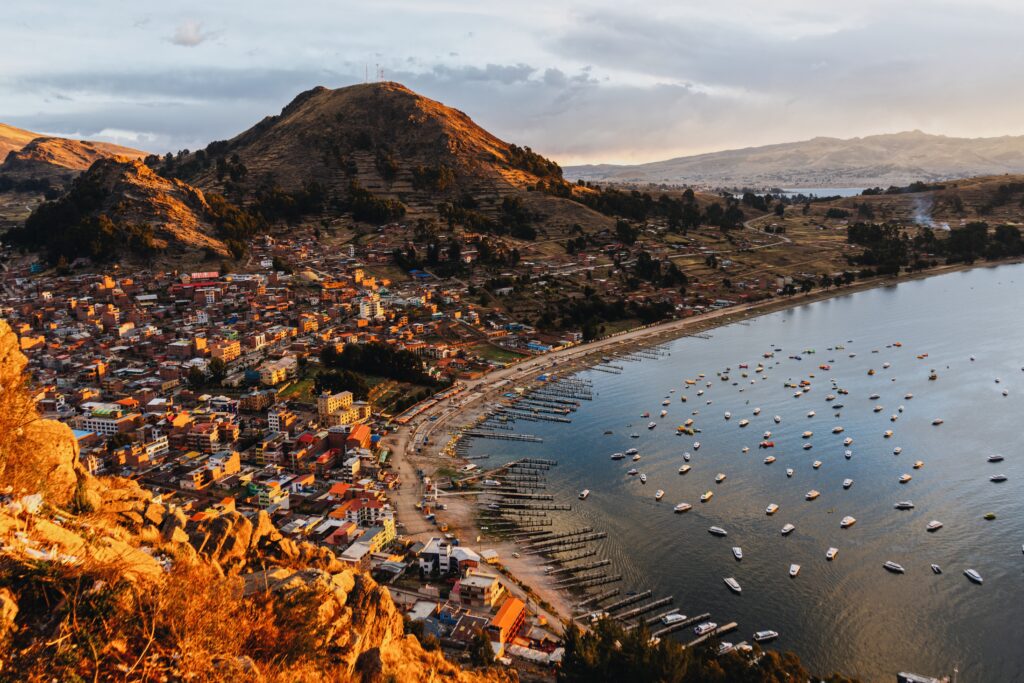
Hike Cerro el Calvario
Cerro el Calvario is the best spot to watch sunset in Copacabana, Bolivia. Sitting high on the top of a hill, Cerro el Calvaio looks out on Lake Titicaca, with views extending as far as the eye can see. Lake Titicaca is so large that you’ll think you’re looking out at the Pacific Ocean!
The hike up to Cerro el Calvario is short but very steep. The round-trip hike from town is under a mile but it gains about 370 feet on the way up. The hike starts on an uneven cobblestone road. As you approach the top the walkway turns into steep blocky steps. Upon reaching the top of Cerro el Calvario the path flattens out.
The top is a sacred hill where pilgrims travel to visit the 14 Stations of the Cross. Walk just beyond the sacred site out to the rocks along the water for spectacular sunset views.
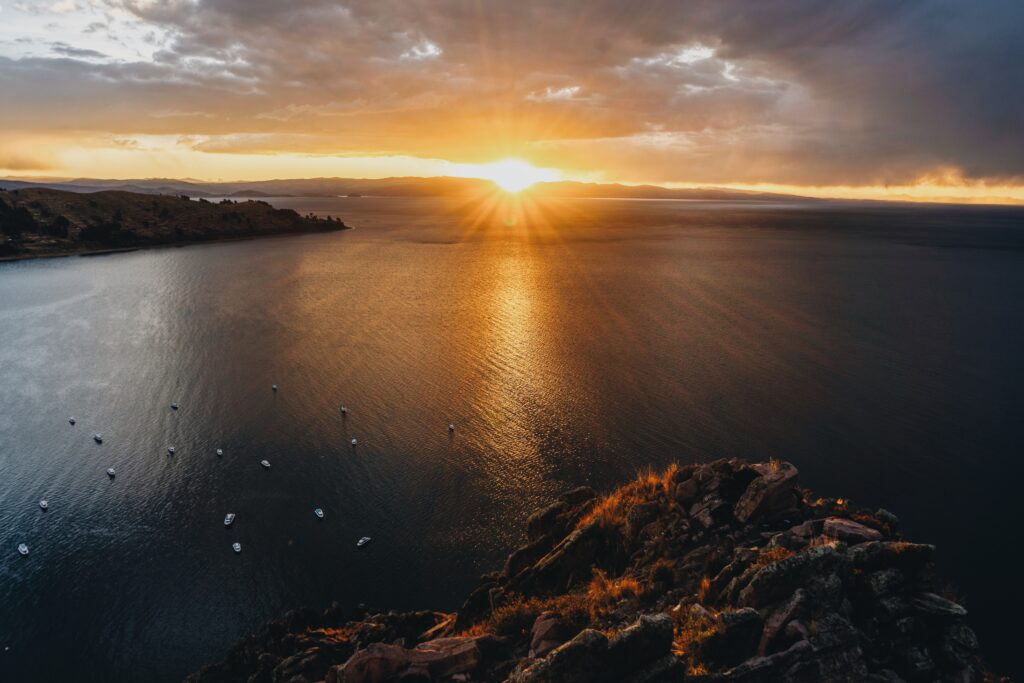
Lake Titicaca
Lake Titicaca is the highest navigable lake in the world and the largest freshwater lake in South America. It stretches across the Peru and Bolivia border spanning 3,232 square miles. At its surface, the lake sits at 12,500 feet in elevation.
Considered the birthplace of the Incas there are ancient ruins surrounding the town and islands. Right on the shores of Copacabana, Bolivia lies Lake Titicaca. On warmer days you can go for a swim at Playas Blancas de Yampupata! Or hop on a local boat tour to explore the Incan islands’ history.
La Horca del Inca – Mirador del Inca
La Horca del Inca or Mirador del Inca is another great hiking option right in the town of Copacabana. It was a pre-Incan astronomical observatory but today only part of the observatory remains. The structures at La Horca del Inca were strategically built to study the stars, moon, and sun in the mid-15th century.
A steep but short hike leads you to the top of La Horca del Inca. The trail starts at the junction of Calle Cahana and Calle Final Murillo, just a short walk from the main square in Copacabana.
Isla del Sol – Island of the Sun
Isla del Sol is the larger of the two islands located off the coast of Copacabana, Bolivia, and shouldn’t be missed when traveling to the area. The island is covered in rough, rocky terraces and occasional eucalyptus trees. While the landscape is rugged it offers stunning views of Lake Titicaca.
There are no paved roads or vehicles on Isla del Sol. It’s only accessible by boat. Over 80 Incan ruins cover Isla del Sol and date back to 1000 to 1500 AD. It is believed the sun god was born on Isla del Sol.
There are a few settlements on Isla del Sol; Yumani and Challapampa are the largest offering options for lodging, dining, and exploring.

How to get to Isla del Sol
To get to Isla del Sol you’ll have to take a boat from Copacabana, Bolivia. Shared public boats leave twice a day from the boat dock in Copacabana at 8:30 am and 1:30 pm. The ride is about 1.5 hours to Yumani and 2 hours to Challapampa. It costs 30 Bs (~4.30 USD) round trip. Ferries back from Isla del Sol to Copacabana leave at 10 am and 3 pm. It’s easy enough to buy the ticket day of.
There is a 10 Bs entrance fee onto Isla del Sol to support the local community.
Isla del Sol Things to Do
Explore the ruins of Chincana Labyrinth, wander through the archeological site of Roca Sagrada, climb the Inca Stairs to a high viewpoint in town, or wander among Mirador Palla Khasa.
Hiking is also very popular on Isla del Sol with one 11.5-mile loop trial circling a large portion of the island starting from Yumani, passing through Challapampa, and out to the peninsula where Cerro Tikani lies.
Should I Stay on Isla del Sol?
There are many lodging and restaurant options on Isla del Sol. If you have the time it’s worth spending a night or two exploring the island while visiting Copacabana, Bolivia. Especially if you enjoy history, there’s plenty to learn here.
Isla de la Luna – Island of the Moon
Isla de la Luna is a small rugged island with agricultural terraces off the coast of Copacabana, Bolivia. It’s most well known for its ancient Incian site, Iñaq Uyu which dates back to 1000 to 1500 AD.
Iñaq Uyu, which translates to “house of the virgins of the sun” is an archeological site on Isla de la Luna. At Iñaq Uyu the Incian societal class structure was pretty strict and lower and royal classes did not mix.
Today you can walk through the remains while visiting Isla de la Luna. Take a full-day tour from Copacabana, Bolivia that visits multiple islands, or take the boat over and spend a night. On Isla de la Luna you’re sure to see llamas strolling around while exploring the island.
The entrance fee onto the island Isla de la Luna is 10 BOB (~ USD 1.50). You pay it upon arrival.
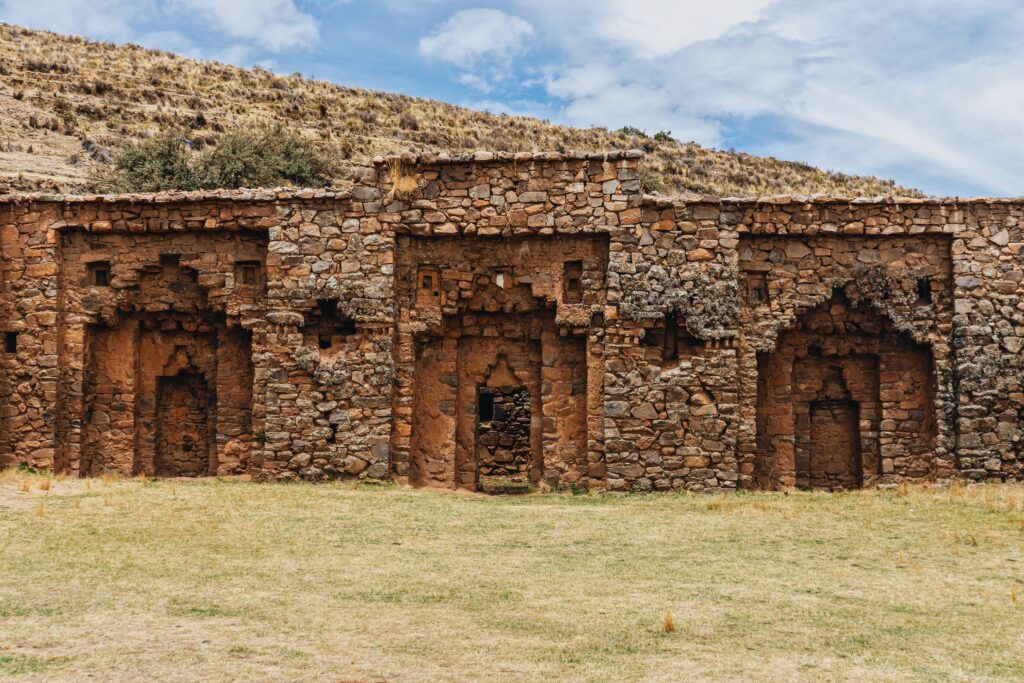
How to get to Isla de la Luna
The best way to explore Isla de la Luna is on a day tour. Schedule a day tour in Copacabana, Bolivia. As you walk around town it’s easy to choose an outfitter for the tour for the day.
Head to Puerto de Copacabana, the boat dock on the edge of town to hop on a shared public boat that will take you to Isla de la Luna. Most people get off the boat at Isla del Sol so make sure you let the captain know that you are heading to Isla de la Luna.
Can you stay on Isla de la Luna?
While most people are content spending just a few hours on Islad de la Luna, there are three simple lodging options on the island if you’re hoping to stay over and learn more about the indigenous culture and history. And of course, take in stunning views of Lake Titicaca. On a clear day, you can even see the snow-capped Andes in the distance!
Check out Luna del Titikaka Lodge for double, trip, and quadruple rooms with lake views. Hostal Luna del Titikaka has beachfront and garden views, a guest house, and a restaurant. Hostal Qhana Pacha is another great option with a terrace, restaurant, and mountain views.
Full Day Isla del Sol & Isla de la Luna Tour
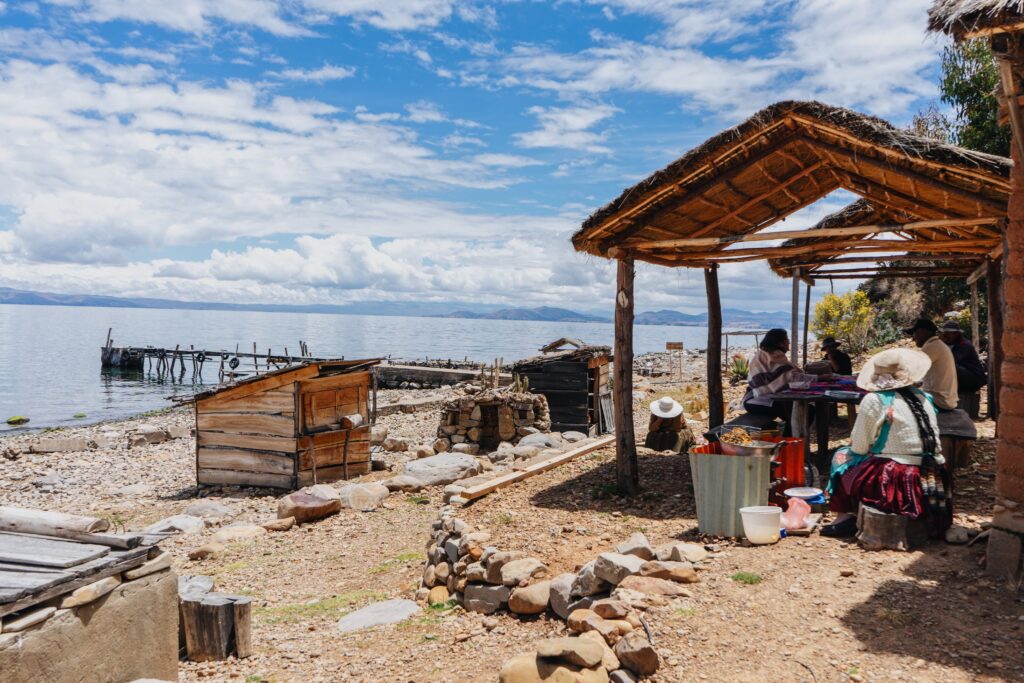
One of the best ways to explore Isla del Sol and Isla de la Luna is on a day tour from Copacabana, Bolivia. This tour starts from the boat tock in Copacabana then heads across the Isa de la Luna where you will spend about an hour exploring Iñaq Uyu. Then you’ll boat over to Isla del Sol where you’ll hike up Inca Stairs for stunning views of Lake Titicaca.
On your way back to Copacabana you’ll stop at the floating islands for lunch where of course trout is a popular meal option. Unfortunately, there are not many vegetarian options here.
On a full-day tour, you’ll receive full narration about the sites you’re seeing, and boat transportation and logistics are taken care of. A full-day tour costs __. Many full-day tours are in Spanish.
Basilica of Our Lady of Copacabana
The Basilica of Our Lady of Copacabana is a large 17th-century shrine located in the center of Copacabana, Bolivia. The basilica is the home of the Virgen de Copacabana image.
The Basilica of Our Lady of Copacabana is located right next to Plaza 2 de Febrero where markets fill the streets and where the blessings of the cars take place.
Bendiciones de Movilidades – Blessing of the Cars
One of the most popular traditions in Copacabana, Bolivia is the Blessing of the Cars. It takes place in Plaza 2 de Febrero, just next to the Basilica of Our Lady of Copacabana. Priests will bless cars with holy water any day of the week but it’s most popular on weekends and holidays.
Cars arrive decored in flowers and banners for a blessing to assure safe passage. People come from all over Bolivia and Peru for blessings. Some cars are also blessed with Coca-Cola, beer, or champagne sprayed all over the car.
Shop at the Copacabana Local Market
One of my favorite ways to explore a country and dive into the culture is by exploring the local markets. Learning about where the locals shop and what they eat is so fascinating! The local market is located around Plaza 2 de Febrero and flows through the streets connecting there.
From fresh fruit and vegetables and freshly squeezed juices to hats, clothing, and local art, the Copacabana Market has everything you could need. And great prices, much better than the main tourist streets!
Dine along Avenida 6 de Agosto
Av. 6 de Agosto is the main tourist street through town. It runs past the Basilica of Our Lady of Copacabana, past Plaza 2 de Febrero, and down to the waterfront of Lake Titicaca. Along the street are a variety of restaurants from coffee bars and pizza shops to traditional Bolivian and Latin American restaurants.
Many lakefront restaurants sit alongside Lake Titicaca. Make sure you try a dish with freshly caught trout, famous to the lake region!
Eat Trout at the Waterfront Kioscos
Fresh-caught trout is a staple for those living along the shores of Lake Titicaca. There are many “kioscos” located right on the waterfront, just to the east of the touristy part of downtown. The food here is cheap, local, and tasty!
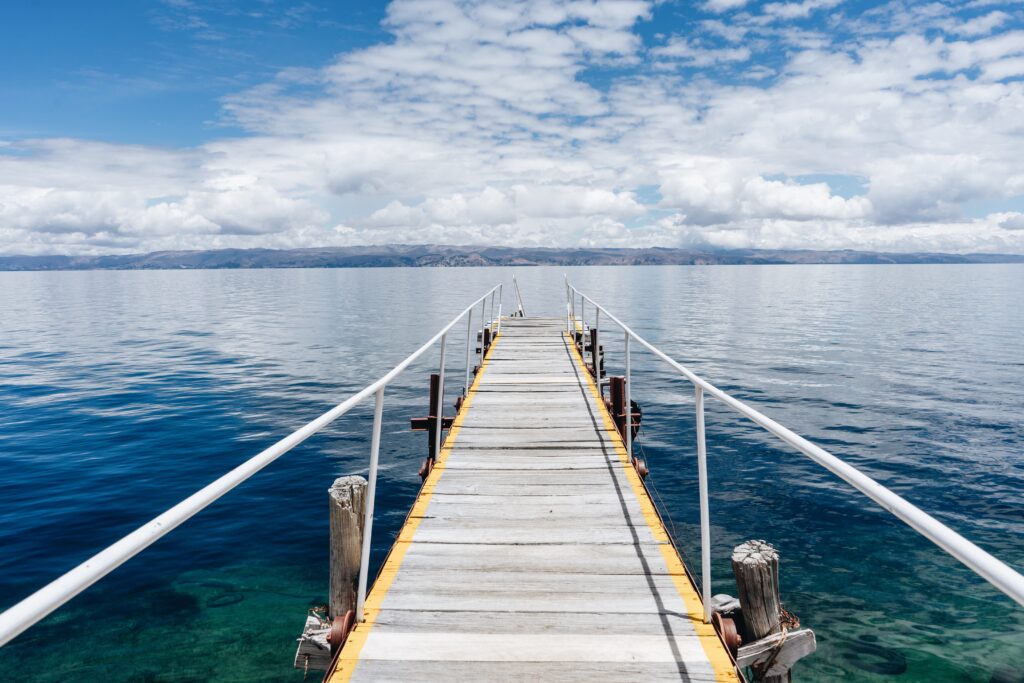
Where to Stay in Copacabana, Bolivia
There are a variety of homestays, hostels, and hotels in Copacabana, Bolivia. Hostal Las Olas is one of the most unique places you can stay in town. Hostel Rosario Lago Titicaca and Hotel Lago Azul are both luxury accommodations offering stunning lakefront views. Skylake B&B Copacabana sits back a little from the lake but still offers views of the lake, great rates, and a tasty free breakfast.





One Comment
Pingback: